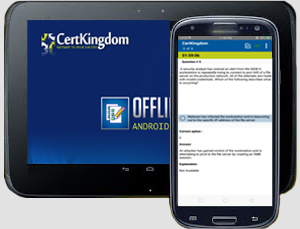Exam: JN0-1103

|
|||||||||||||||||||||||||||
Exam Details
Exam questions are derived from the recommended training and the exam resources
listed above. Pass/fail status is available immediately after taking the exam.
The exam is only provided in English.
Exam Code: JN0-1103
Prerequisite Certification : None
Delivered by:
Exam Length: 90 minutes
Exam Type: 65 multiple-choice questions
Recertification
Juniper certifications are valid for three years. For more information, see
Recertification.
The Design track enables you to demonstrate competence with Juniper Networks
design principles and associated technologies. JNCIA-Design, the associate-level
certification in this track, is designed for networking professionals and
designers with beginner knowledge of network design, theory, and best practices.
The written exam verifies your understanding of network design fundamentals.
This track includes one certification:
JNCIA-Design: Design, Associate. For details, see the sections below.
Exam Preparation
We recommend the following resources to help you prepare for your exam.
However, these resources aren't required, and using them doesn't guarantee
you'll pass the exam.
Recommended Training Juniper Networks® Design Fundamentals
Exam Resources
Industry/product knowledge
Juniper TechLibrary
Additional Preparation Juniper Learning Portal
Exam Objectives
Here’s a high-level view of the skillset required to successfully complete
the JNCIA-Design certification exam.
Exam Objective
Customer Network Design Requirements
Identify initial network design requirements for:
Juniper Networks life-cycle service approach
Proposal boundaries and considerations
Greenfield and brownfield deployments
Top-down networks
Capacity planning
Identify the roles of different Juniper products and solutions, including:
Routers
Switches
Security
WLAN
Software-defined networking (SDN)
Network management
Securing the Network
Identify security design principles for:
General security design and considerations
Securing a data center
Securing the campus WAN
Zero-trust security
Secure access service edge (SASE)
Network Management or Reliability
Identify network design considerations for business continuity, including:
High-resiliency design
Link- and device-level redundancy
Multihomed Ethernet Segment Identifier Link Aggregation Groups (ESI LAGs)
Juniper Networks SRX Firewalls redundancy
Virtual chassis
Campus redundancy best practices
Identify design considerations for network automation, including:
Benefits of network automation
Juniper automation products
Junos® XML, Representational State Transfer (REST), JSD APIs
Junos OS on-box and off-box automation
Identify design considerations for network management strategies, including:
Network management methodologies
Separation of production and management traffic
Configuration backups
Remote console access
Juniper network management strategies
Campus and Branch LAN Design
Identify considerations for a wired campus or branch LAN, including:
Campus LAN design best practices
Modular design
Subnet and VLAN design
Access control design
Ethernet VPN-Virtual Extensible LAN (EVPN-VXLAN) architecture
Campus oversubscription ratios
Campus design architectures
Identify considerations for a wireless LAN, including:
WLAN design phases
Gathering business requirements
Gathering technical requirements
Device types
Designing secondary coverage
Designing real-time location services
Access point (AP) coverage patterns
Co-channel contention
Gathering RF requirements
RF modeling
Campus and Branch WAN Design
Identify considerations for a campus or branch WAN, including:
Campus or branch WAN connectivity functions
Best practices for designing the campus or branch WAN
Campus WAN performance
Campus WAN VPN design
Campus active/active and active/passive high availability (HA)
Identify considerations for an SD-WAN, including:
SD-WAN design considerations
SD-WAN devices
Assurance models
SD-WAN intersite connectivity
Data Center Network Design
Identify considerations for general data center network, including:
Data center design best practices
Traffic patterns
Virtual chassis
Environmental considerations
Data center fabric architectures
Identify considerations for IP fabric-based data center network, including:
Benefits of IP fabric over other data center architectures
Design options with IP fabrics
Spine-and-leaf device placement recommendations
Underlay and overlay design
Routing protocol selection
IP fabric best practices
IP fabric scaling
JN0-1103 Brain Dumps Exam + Online / Offline and Android Testing Engine & 4500+ other exams included
$50 - $25 (you save $25)
Buy Now
QUESTION 1
Which two statements are correct about greenfield and brownfield
deployments? (Choose two.)
A. A brownfield deployment has no network environment.
B. A greenfield deployment has no network environment.
C. A greenfield deployment has a network environment and must be upgraded.
D. A brownfield deployment has a network environment and must be upgraded.
Answer: B,D
QUESTION 2
Which aspect of network design facilitates future growth and troubleshooting
efforts?
A. business continuity
B. high availability
C. modularity
D. security
Answer: C
QUESTION 3
You are the network architect with a large banking institution with
operations around the world. Any outage results in lost revenue for your
company,
and may result in lost customers. Network uptime is your top priority.
In this scenario, what should be your focus?
A. return on investment
B. business continuity
C. capacity planning
D. service visualization
Answer: B
QUESTION 4
Which three categories should the collected data be sorted into during the
data analysis phase?
(Choose three.)
A. customer requirements
B. customer data
C. Industry standards
D. personal data
E. project boundaries
Answer: A,C,E
QUESTION 5
What are two characteristics of a greenfield deployment? (Choose two.)
A. A greenfield deployment means that there are fewer restrictions.
B. A greenfield deployment is more common.
C. A greenfield deployment always implies integration with other vendor
products.
D. A greenfield deployment means a new deployment.
Answer: A,D
logged members Can Post comments / review and take part in Discussion
Certkingdom Offline Testing Engine Simulator Download
Prepare with yourself how CertKingdom Offline Exam Simulator it is designed specifically for any exam preparation. It allows you to create, edit, and take practice tests in an environment very similar to an actual exam.
Supported Platforms: Windows-7 64bit or later - EULA | How to Install?
FAQ's: Windows-8 / Windows 10 if you face any issue kinldy uninstall and reinstall the Simulator again.
Download Offline Simulator-Beta
Certkingdom Testing Engine Features
- Certkingdom Testing Engine simulates the real exam environment.
- Interactive Testing Engine Included
- Live Web App Testing Engine
- Offline Downloadable Desktop App Testing Engine
- Testing Engine App for Android
- Testing Engine App for iPhone
- Testing Engine App for iPad
- Working with the Certkingdom Testing Engine is just like taking the real tests, except we also give you the correct answers.
- More importantly, we also give you detailed explanations to ensure you fully understand how and why the answers are correct.
Certkingdom Android Testing Engine Simulator Download
Take your learning mobile android device with all the features as desktop offline testing engine. All android devices are supported.
Supported Platforms: All Android OS EULA
Install the Android Testing Engine from google play store and download the app.ck from certkingdom website android testing engine download

Certkingdom Android Testing Engine Features
- CertKingdom Offline Android Testing Engine
- Make sure to enable Root check in Playstore
- Live Realistic practice tests
- Live Virtual test environment
- Live Practice test environment
- Mark unanswered Q&A
- Free Updates
- Save your tests results
- Re-examine the unanswered Q & A
- Make your own test scenario (settings)
- Just like the real tests: multiple choice questions
- Updated regularly, always current




